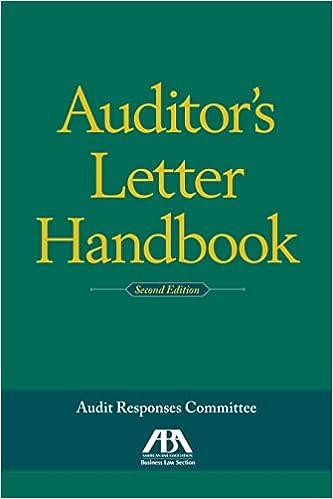Question
Putnam & Putnam, a legal firm, uses the balance sheet approach to estimate uncollectible accounts expense. At year-end, an aging of the accounts receivable produced
| Putnam & Putnam, a legal firm, uses the balance sheet approach to estimate uncollectible accounts expense. At year-end, an aging of the accounts receivable produced the following five groupings: |
| a. | Not yet due | $ | 250,000 | ||
| b. | 130 days past due | 105,000 | |||
| c. | 3160 days past due | 40,000 | |||
| d. | 6190 days past due | 7,500 | |||
| e. | Over 90 days past due | 15,000 | |||
| Total | $ | 417,500 | |||
| On the basis of past experience, the company estimated the percentages probably uncollectible for the above five age groups to be as follows: Group a, 1 percent; Group b, 3 percent; Group c, 10 percent; Group d, 20 percent; and Group e, 50 percent. |
| The Allowance for Doubtful Accounts before adjustment at December 31 showed a credit balance of $5,900. |
Instructions
| a. | Compute the estimated amount of uncollectible accounts based on the above classification by age groups. |
| b. | Prepare the adjusting entry needed to bring the Allowance for Doubtful Accounts to the proper amount. |
Step by Step Solution
There are 3 Steps involved in it
Step: 1

Get Instant Access to Expert-Tailored Solutions
See step-by-step solutions with expert insights and AI powered tools for academic success
Step: 2

Step: 3

Ace Your Homework with AI
Get the answers you need in no time with our AI-driven, step-by-step assistance
Get Started


